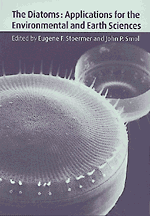Book contents
- Frontmatter
- Contents
- Contributors
- Preface
- Part I Introduction
- Part II Diatoms as indicators of environmental change in flowing waters and lakes
- Part III Diatoms as indicators in extreme environments
- Part IV Diatoms as indicators in marine and estuarine environments
- Part V Other applications
- 18 Diatoms and archeology
- 19 Diatoms in oil and gas exploration
- 20 Forensic science and diatoms
- 21 Toxic and harmful marine diatoms
- 22 Diatoms as markers of atmospheric transport
- 23 Diatomite
- Part VI Conclusions
- Glossary, and acronyms
- Index
20 - Forensic science and diatoms
Published online by Cambridge University Press: 16 January 2010
- Frontmatter
- Contents
- Contributors
- Preface
- Part I Introduction
- Part II Diatoms as indicators of environmental change in flowing waters and lakes
- Part III Diatoms as indicators in extreme environments
- Part IV Diatoms as indicators in marine and estuarine environments
- Part V Other applications
- 18 Diatoms and archeology
- 19 Diatoms in oil and gas exploration
- 20 Forensic science and diatoms
- 21 Toxic and harmful marine diatoms
- 22 Diatoms as markers of atmospheric transport
- 23 Diatomite
- Part VI Conclusions
- Glossary, and acronyms
- Index
Summary
Introduction
The legal process has used scientific procedures for many years in its various deliberations. Some of these, for instance the DNA profiling of body fluids, are now essential and routine practice. The use of diatoms in forensic science is naturally much smaller, but in certain types of investigation, diatom taxonomy and ecology play a significant role. The diatomologist may be able to provide the investigation with evidence, which will enable the court to reach its verdict, and may be used by either the prosecution or the defence.
Drowning
The most frequent application of diatoms in forensic science is in the diagnosis of death by drowning. Drowning is a very common accidental cause of death, and thousands die each year in this fashion. The majority of these individuals die in circumstances which are not contentious, where there are witnesses, or strong indications of suicide such as a note. Where the circumstances surrounding the individual's death are less clear, then it is often important to be as certain as one can be of how death occurred.
Where the body is fresh, the pathologist may have little difficulty in reaching a verdict of drowning. However, the histopathological signs of drowning are often transient and overlaid by the grosser effects of decomposition. Additionally, in cases where an individual has been severely injured before being immersed in water, it is obviously important to determine whether death is due to these injuries or because of drowning.
- Type
- Chapter
- Information
- The DiatomsApplications for the Environmental and Earth Sciences, pp. 413 - 418Publisher: Cambridge University PressPrint publication year: 1999
- 7
- Cited by



